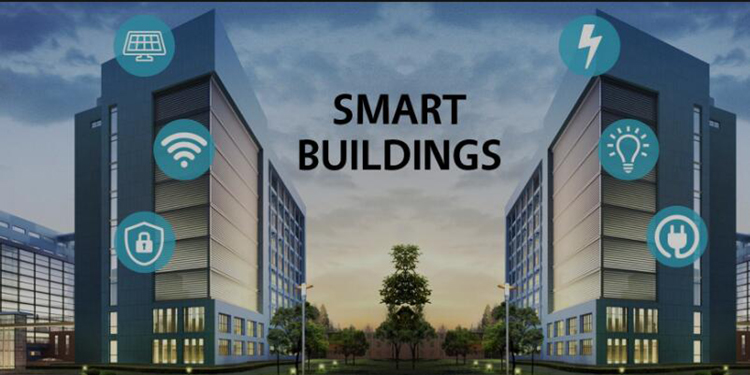
It is apparent that smart buildings are the future as they help to meet sustainability goals, reduce operational costs, improve the occupant experience, and achieve work-life ambience. According to IDC Energy Insights, smart building technology spending will grow from $6.3 billion in 2014 to $17.4 billion in 2019. For many years, smart building technologies like Building Automation Systems (BAS) have been working to connect different components of buildings, for example, HVAC, water supply, lighting, and fire emergency systems, to help facility managers do their job better. But the real question is how IoT and AI make sense for buildings? Aren’t Building Automation Systems enough that already help facility managers to take the centralized control of a building’s heating & cooling, lighting, and other systems?
No. The reality is that the role of facility managers and building owners is changing as the focus is shifting from monitoring building systems and facilities to improving operational efficiencies, decreasing carbon footprint, and improving the occupant experience. The technology available in the market for managing building facilities comes as a standalone platform (e.g. BAS), which neither helps facility managers to drive value from the data being generated nor helps building owners to resolve critical issues and meet changing customer expectations. Buildings today generate a huge amount of data on assets, energy and people that can actually be used to derive a lot of useful information. The only way to use this data in an appropriate way is to collect it and analyze it using an IoT platform that comprises both advanced analytics and machine learning modules.
The available technology in the market currently for facilities management is standalone software, but to become value-driven players and stay relevant to changing customer expectations, teams need technology that unifies siloed building automation systems, resolves critical issues, and enables the effective use of existing data. The insight can help building operators optimize various aspects of the building, including energy efficiency, occupant engagement and productivity, everyday sustainability performance, building maintenance, and so on.
It is no secret that smart buildings have been proven to streamline facilities management, save energy, and prevent expensive equipment failures. Yet to many building owners and facility managers, the value of AI-powered smart building remains a mystery. Let me put together some of the most common myths about smart buildings and unearth the reality.
MYTH: Smart building technologies are expensive.
FACT: Within a couple of years, smart building technology delivers greater returns in terms of energy saving and cutting operational costs against what you invest.
MYTH: It is difficult to operate smart building systems.
FACT: Technologies like AI and IoT once deployed require minimal to no technical skills for facility managers as it takes a lot of decisions itself and shows you all the reports and suggestions in a highly intuitive and interactive dashboard. In fact, it becomes easier than before to optimize building operations, resolve a recurring equipment malfunction, and reduce carbon footprint since more information is available with a smart building solution.
MYTH: Smart building technology is for new buildings only.
FACT: No, that’s not the case. Even though old buildings may be using pneumatic and analog technologies, smart building solutions can be implemented in old buildings through the use of effective retrofit technologies. By embedding sensors and connecting via gateways, data can be sent to the IoT cloud for further processing and to generate intelligence.
MYTH: IoT is ideal for only smart home applications.
FACT: There are a number of smart home applications based on IoT and AI; however, it is not limited to residential facilities only. All types of buildings – be it commercial or residential – can be retrofitted or built to become smart and highly automated using IoT and AI.
Conclusion
Smart buildings are definitely one of the ways to conserve energy by optimizing systems and automating controls.